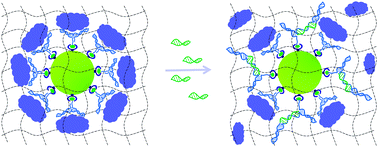A hybrid particle–hydrogel composite for oligonucleotide-mediated pulsatile protein release
Abstract
The development of pulsatile

* Corresponding authors
a
Department of Chemical, Materials & Biomolecular Engineering University of Connecticut Storrs, USA
E-mail:
yongwang@engr.uconn.edu
Fax: +860 486 2959
Tel: +860 486 4072
The development of pulsatile

 Please wait while we load your content...
Something went wrong. Try again?
Please wait while we load your content...
Something went wrong. Try again?
B. Soontornworajit, J. Zhou and Y. Wang, Soft Matter, 2010, 6, 4255 DOI: 10.1039/C0SM00206B
To request permission to reproduce material from this article, please go to the Copyright Clearance Center request page.
If you are an author contributing to an RSC publication, you do not need to request permission provided correct acknowledgement is given.
If you are the author of this article, you do not need to request permission to reproduce figures and diagrams provided correct acknowledgement is given. If you want to reproduce the whole article in a third-party publication (excluding your thesis/dissertation for which permission is not required) please go to the Copyright Clearance Center request page.
Read more about how to correctly acknowledge RSC content.
 Fetching data from CrossRef.
Fetching data from CrossRef.
This may take some time to load.
Loading related content
